[On further reading of Griffin's book, I realize that Griffin was correct that Scoggins' source within the FAA was not identified by the 9/11 Commission.]
http://www.vanityfair.com/politics/features/2006/08/norad200608
BEGINNING OF EXCERPT
And while NORAD commanders did, indeed, order the Langley fighters to scramble at 9:24, as Scott and Arnold testified, it was not in response to the hijacking of American 77 or United 93. Rather, they were chasing a ghost. neads was entering the most chaotic period of the morning.
"Chase this guy down"
At 9:21 a.m., just before Dooley's alert about a third hijacked plane headed for Washington, neads is in the eye of the storm—a period of relative calm in which, for the moment, there are no reports of additional hijackings.
The call that sets off the latest alarm ("Another hijack! It's headed towards Washington!") comes from Boston and is wholly confounding: according to Scoggins, the Boston manager, American 11, the plane they believed was the first one to hit the World Trade Center, is actually still flying—still hijacked—and now heading straight for D.C. Whatever hit the first tower, it wasn't American 11.
The chase is on for what will turn out to be a phantom plane.
09:21:50
NASYPANY: O.K. American Airlines is still airborne—11, the first guy. He's heading towards Washington. O.K., I think we need to scramble Langley right now. And I'm—I'm gonna take the fighters from Otis and try to chase this guy down if I can find him.
Arnold and Marr approve scrambling the two planes at Langley, along with a third unarmed trainer, and Nasypany sets the launch in motion.
It's a mistake, of course. American 11 was, indeed, the plane that hit the first tower. The confusion will persist for hours, however. In Boston, it is Colin Scoggins who has made the mistaken call.
"When we phoned United [after the second tower was hit], they confirmed that United 175 was down, and I think they confirmed that within two or three minutes," Scoggins, the go-to guy at Boston Center for all things military, later told me. "With American Airlines, we could never confirm if it was down or not, so that left doubt in our minds."An unwieldy conference call between F.A.A. centers had been established, and Scoggins was monitoring it when the word came across—from whom or where isn't clear—that American 11 was thought to be headed for Washington. Scoggins told me he thinks that the problem started with someone overheard trying to confirm from American whether American 11 was down—that somewhere in the flurry of information zipping back and forth during the conference call this transmogrified into the idea that a different plane had hit the tower, and that American 11 was still hijacked and still in the air. The plane's course, had it continued south past New York in the direction it was flying before it dipped below radar coverage, would have had it headed on a straight course toward D.C. This was all controllers were going on; they were never tracking an actual plane on the radar after losing American 11 near Manhattan, but if it had been flying low enough, the plane could have gone undetected. "After talking to a supervisor, I made the call and said [American 11] is still in the air, and it's probably somewhere over New Jersey or Delaware heading for Washington, D.C.," Scoggins told me.
END OF EXCERPTThere are other oddities in this article, which I will address later. The general impression I got from the article was that neither NORAD NEADS nor the FAA - in New York and Boston - actually tracked Flight 11 into the North Tower, and that they were getting their information from CNN television.
I found it strange that American Airlines, which tracks its planes itself, would not confirm that Flight 11 hit the North tower for several hours:
The problem, Scoggins told me later, was that American Airlines refused to confirm for several hours that its plane had hit the tower. This lack of confirmation caused uncertainty that would be compounded in a very big way as the attack continued. (Though airlines have their own means of monitoring the location of their planes and communicating with their pilots, they routinely go into information lockdown in a crisis.)
I have already discussed how even late in the afternoon on September 11, United Airlines was not confirming, at least in its press releases, that Flight 175 had hit the South Tower, but was sending employees to New York "based on information received from the authorities":
http://ningens-blog.blogspot.com/2007/03/united-airlines-reports-on-flight-175.html
This Vanity Fair article somewhat contradicts the United Airlines press releases I discussed, because it says that United Airlines confirmed almost immediately that Flight 175 was "down" (though not that it had hit the WTC South Tower) .
In its press release of 11:17 a.m., United said it was "deeply concerned" about Flight 175, and confirmed that Flight 93 crashed near Pittsburgh.
http://web.archive.org/web/20010911230853/www.ual.com/Response/PressReleases/0,11641,-1__1748_1,00.html
In its press release of 11:53 a.m., said that it had confirmed that Flight 175 and Flight 93 had crashed, but did not say where either aircraft had crashed.
http://web.archive.org/web/20010911230854/www.ual.com/Response/PressReleases/0,11641,-1__1750_1,00.html
In its press release of 2:09 p.m., United said as follows:
Earlier today, United confirmed the following details:
- United Flight 93, a Boeing 757 aircraft, departed from Newark, NJ, at 8:01 a.m. local time, bound for San Francisco with 38 passengers onboard, 2 pilots and 5 flight attendants. This aircraft crashed near Johnstown, PA.
- United Flight 175, a Boeing 767 aircraft, departed from Boston, MA, at 7:58 a.m local time, bound for Los Angeles with 56 passengers onboard, 2 pilots and 7 flight attendants. United has confirmed the loss of this aircraft. Last radar contact with the aircraft was between Newark, NJ, and Philadelphia, PA.
United is dispatching a team to Johnstown, PA, as soon as possible to assist in every way with the investigation and to provide assistance, help and support to family members. Based on information received from the authorities, United is also sending employees to the New York City area to assist in every way it can with this tragedy.
In its press release of 3:18 p.m., United gave the same information, but added that families of passengers of Flights 93 and 175 would receive initial payments of $25,000:
At 5:23 p.m, United repeated the same information about Flight 93 crashing in Pennsylvania, and Flight 175 having been lost and radar contact lost between Newark and Philadelphia:
http://web.archive.org/web/20010911230854/www.ual.com/Response/PressReleases/0,11641,-1__1760_1,00.html
Although United Airlines may have had reasons to delay announcing that Flight 175 had hit the South Tower, I find it strange that American and United had their own means of tracking their planes and communicating with their pilots, as stated in the Vanity Fair article above, but would not confirm that their planes hit the World Trade Center buildings for many hours. I can understand "information lockdown," and there may be reasons United Airlines was more willing to acknowledge that its plane crashed into a field with only passenger deaths but was not willing to admit its plane hit the South Tower, which involved many more deaths. Still, I wonder if this means that American and United did not agree that their planes had hit the World Trade Center buildings.
And of course, I wonder about the Bureau of Transportation Statistics that first showed Flight 11 not being scheduled for September 11, then showing Flight 11 scheduled but not taking off:
http://ningens-blog.blogspot.com/2007/03/flight-11-and-flight-77-now-in-bts.html
And I wonder about the Bureau of Transportation Statistics data showing that Flight 175 took off 9 minutes later than the FAA and the 9/11 Commission say:
http://ningens-blog.blogspot.com/2007/03/what-time-did-flight-175-take-off.htmlAnother reason this time is important has become apparent to me from reading this FAA Report on Aircraft Accident about Flight 11:
http://www.gwu.edu/~nsarchiv/NSAEBB/NSAEBB165/faa6.pdf
What does this prove? Nothing. It's just odd to me. My gut tells me that Flights 175 and 11 were just "damn inputs," as I will write in my next post.

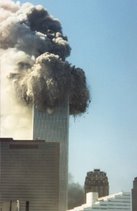

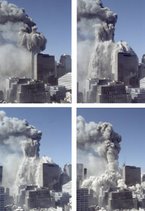

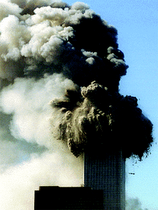

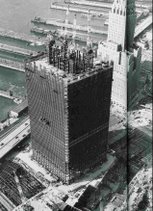
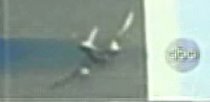
No comments:
Post a Comment